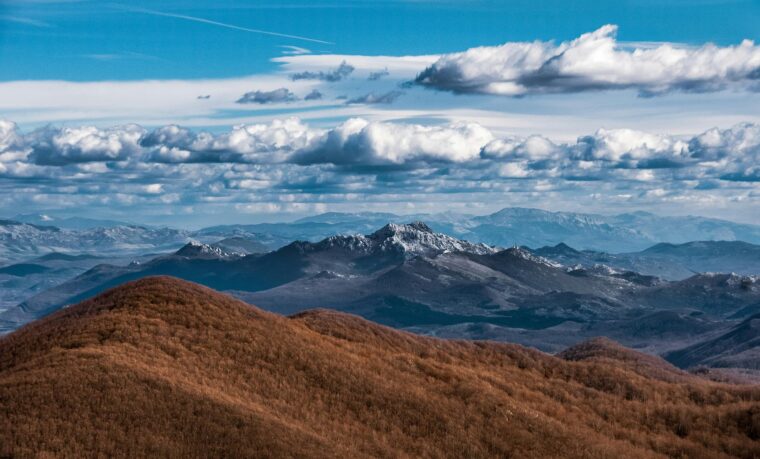Croatia, a country renowned for its stunning coastline and crystal-clear waters of the Adriatic Sea, harbors a lesser-known treasure that awaits the adventurous traveler: its magnificent hiking trails. Beyond the popular beaches and historic coastal towns lies a diverse landscape of rugged mountains, lush forests, cascading waterfalls, and panoramic vistas that offer some of Europe’s most breathtaking hiking experiences. From the imposing peaks of the Velebit Mountains to the verdant slopes of Učka Nature Park, Croatia’s hiking trails provide an intimate connection with nature that reveals the country’s wild heart and soul.

The Croatian landscape presents a remarkable contrast of environments within relatively short distances. In a single day, one can journey from Mediterranean coastal paths with views of island-dotted horizons to alpine terrain reminiscent of more northern European countries. This geographical diversity has fostered an equally varied ecosystem, with endemic plant species, rare wildlife, and distinctive geological formations that make each hiking trail a unique adventure of discovery. Whether you’re an experienced mountaineer seeking challenging ascents or a casual nature enthusiast looking for gentle walks through picturesque settings, Croatia’s network of trails offers something for every level of ambition and ability.
What makes hiking in Croatia particularly special is the harmonious blend of natural beauty and cultural heritage encountered along the way. Ancient shepherd’s paths wind through traditional villages where time seems to stand still. Centuries-old dry stone walls trace the contours of mountain slopes, telling stories of generations who have lived in harmony with these landscapes. Medieval fortresses crown strategic hilltops, offering both historical intrigue and spectacular viewpoints. This seamless integration of human history with natural splendor creates a hiking experience that engages both the body and mind.
In this comprehensive guide, we will explore the magnificent hiking opportunities in Croatia, with special focus on two contrasting yet equally captivating regions: the majestic Velebit Mountains, Croatia’s largest mountain range stretching along the Adriatic coast, and the enchanting Učka Nature Park, where mountain meets sea in a spectacular fusion of landscapes. We’ll delve into the rich history of hiking in these regions, examine the most rewarding trails with their distinctive features, and provide practical information to help you plan your own Croatian hiking adventure. Along the way, we’ll also highlight other notable hiking destinations throughout the country and share insights on how to combine hiking with another quintessential Croatian experience—sailing the Adriatic on a chartered yacht.
The Rich History of Hiking in Croatia
The tradition of hiking in Croatia has deep historical roots that stretch back centuries, evolving from practical necessity to recreational pursuit. Long before modern tourism discovered Croatia’s natural wonders, local inhabitants traversed these mountains and forests as part of their daily lives. Shepherds created networks of paths while moving their flocks between seasonal pastures, traders established routes connecting coastal settlements with inland communities, and villagers maintained trails to access resources essential for survival. These ancient pathways, many still in use today, form the foundation of Croatia’s extensive hiking infrastructure.
The formal development of hiking as a recreational activity in Croatia began in the late 19th century, marking a significant shift in how people engaged with the natural landscape. In 1874, the Croatian Mountaineering Society was established, making Croatians the ninth nation in the world to have their own alpine club—remarkably, even before some traditionally “alpine” nations. This pioneering organization played a crucial role in mapping trails, building mountain huts, and promoting the cultural and health benefits of mountain exploration. The society’s early efforts focused primarily on the mountains closest to urban centers, but gradually expanded to encompass Croatia’s diverse topography from the Adriatic coast to the continental interior.
A pivotal moment in Croatian hiking literature occurred in 1852 when Avelin Ćepulić from Rijeka published an article entitled “Dawn at Učka” in the Neven magazine. This evocative account, describing the ascent of mountaineers from Rijeka to the peak of Učka, represents the first documented hiking trip in Croatian literature. The article captured not only the physical journey but also the emotional and spiritual dimensions of the experience, helping to inspire a generation of nature enthusiasts. Throughout the late 19th and early 20th centuries, similar accounts proliferated in Croatian publications, further cementing hiking’s place in the national consciousness.
The development of hiking infrastructure accelerated in the early 20th century, particularly during the 1920s and 1930s. This period saw the construction of numerous mountain huts, shelters, and observation towers that remain vital components of Croatia’s hiking network today. Perhaps the most significant infrastructure project of this era was the Premužić Trail on Velebit Mountain, built between 1930 and 1933. Designed by forestry engineer Ante Premužić, this masterpiece of trail building made previously inaccessible parts of the rugged Velebit range traversable for ordinary hikers. The trail’s construction not only opened up new territories for exploration but also provided employment during economically challenging times.
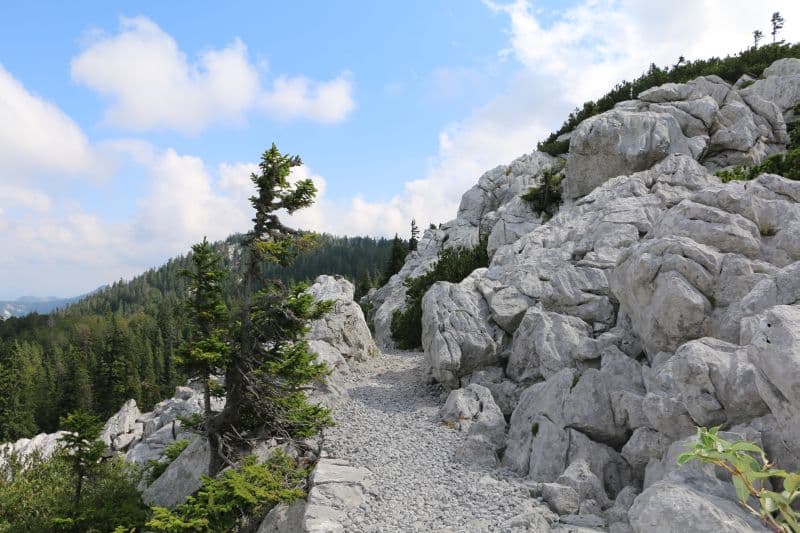
The post-World War II period brought further expansion and formalization of Croatia’s hiking infrastructure. The establishment of national parks and nature parks, beginning with Plitvice Lakes National Park in 1949, created protected areas where hiking could flourish alongside conservation efforts. Local hiking clubs proliferated throughout the country, each maintaining trails in their respective regions and organizing regular excursions for members. These grassroots organizations, many still active today, have been instrumental in preserving traditional hiking routes and introducing new generations to the joys of mountain exploration.
In recent decades, Croatia’s hiking scene has experienced a renaissance, driven by growing international interest in outdoor recreation and sustainable tourism. The Croatian Mountain Rescue Service (HGSS) has played a vital role in this development, not only ensuring hiker safety but also contributing to trail maintenance and public education. Modern technological innovations, including detailed digital maps and GPS tracking, have made Croatia’s mountains more accessible than ever, while social media has created communities where hikers can share experiences and information. Long-distance trails like the Via Adriatica and the Croatian Long Distance Trail (CLDT) have emerged, offering ambitious hikers the opportunity to experience the country’s diverse landscapes in extended journeys.
Today, hiking in Croatia represents a harmonious blend of tradition and innovation. Ancient shepherd’s paths coexist with newly designed thematic trails that highlight cultural and natural features. Mountain huts built a century ago have been renovated to accommodate contemporary expectations while maintaining their rustic charm. Most importantly, the fundamental spirit that animated Croatia’s earliest hikers—a profound appreciation for the natural world and the transformative power of mountain experiences—continues to inspire those who explore the country’s trails today.
Velebit Mountains: Croatia’s Majestic Mountain Range
Rising dramatically from the Adriatic coastline, the Velebit Mountains stand as Croatia’s most impressive mountain range and one of the country’s defining natural landmarks. Stretching approximately 145 kilometers from northwest to southeast, this magnificent karst massif forms part of the Dinaric Alps system and creates a natural boundary between the coastal region of Dalmatia and the interior Lika plateau. In 1978, UNESCO recognized the extraordinary ecological value of this area by designating it a Biosphere Reserve under the Man and Biosphere Programme, acknowledging both its pristine natural qualities and the sustainable relationship between humans and the environment that has evolved here over centuries.
The geological story of Velebit began approximately 200 million years ago when the area was covered by a shallow sea. Over millennia, limestone deposits accumulated on the seabed, eventually forming the foundation of today’s mountains. The karst processes that followed—the dissolution of soluble rocks by water—created Velebit’s distinctive landscape characterized by rugged terrain, numerous caves, sinkholes, and underground watercourses. This complex geological history has produced some of Croatia’s most spectacular natural formations, including the imposing Paklenica Canyon with its towering vertical cliffs, the mysterious Cerovačke Caves with their intricate stalactite and stalagmite formations, and countless dolines (sinkholes) that punctuate the mountain plateau like natural amphitheaters.
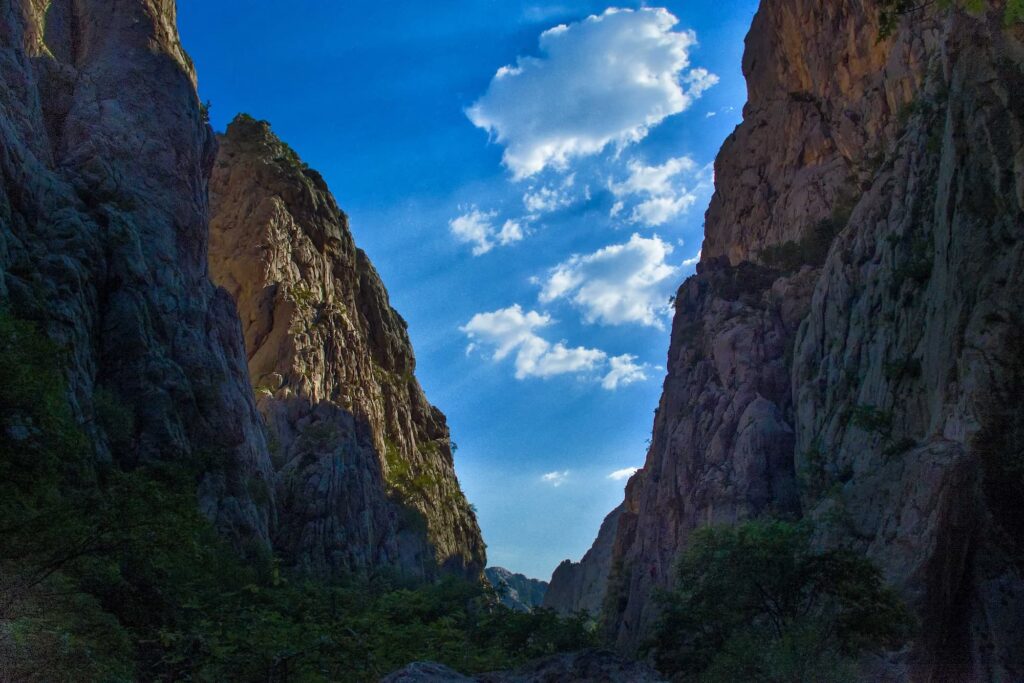
Velebit’s biodiversity is equally impressive, with the mountain range serving as a critical habitat for numerous plant and animal species, many of which are endemic to this region. The mountain’s unique position—where Mediterranean and continental climate zones meet—has created diverse ecological niches supporting over 2,000 plant species. Among these, the Degenia velebitica stands out as perhaps the most famous; this delicate yellow flower grows nowhere else on Earth and has become a symbol of Croatian natural heritage. The animal kingdom is equally well-represented, with large carnivores including bears, wolves, and the elusive Eurasian lynx roaming the forested slopes. Birdwatchers can spot golden eagles soaring above the peaks, while numerous butterfly species add flashes of color to the mountain meadows during summer months.
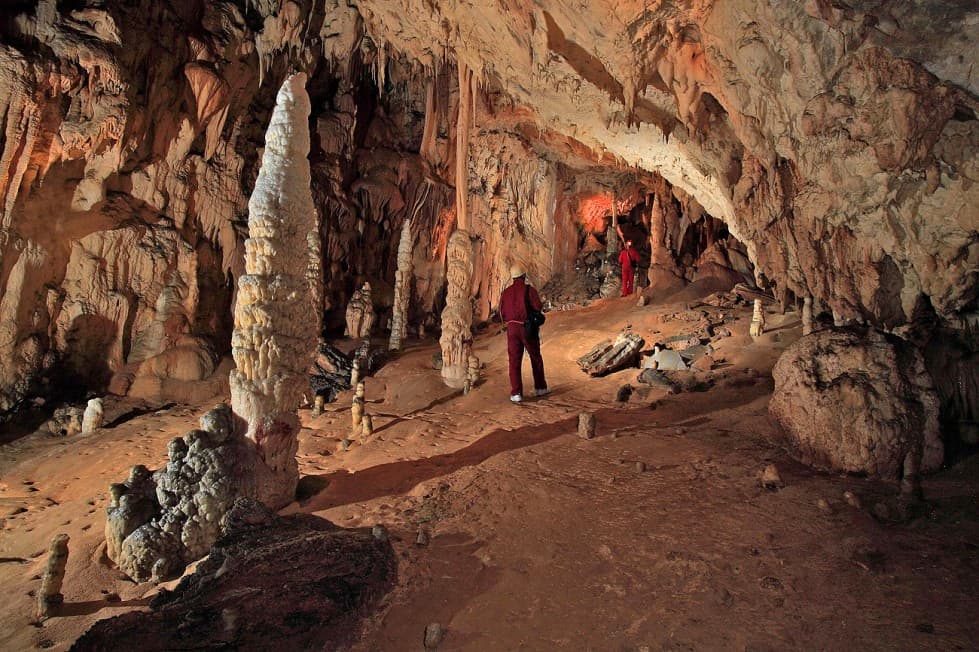
The human history of Velebit is as rich as its natural heritage. Archaeological evidence suggests human presence dating back to prehistoric times, with numerous artifacts discovered in caves throughout the range. Throughout history, the mountains have served as both barrier and bridge between coastal and inland communities, influencing patterns of settlement, trade, and cultural exchange. Traditional livelihoods on Velebit centered around pastoralism, with seasonal movements of livestock between winter quarters in coastal areas and summer pastures in the mountains. This transhumance practice shaped not only the economy but also the cultural identity of local communities, leaving behind a legacy of distinctive architectural features, folklore, and culinary traditions that visitors can still experience today.
The crown jewel of Velebit’s hiking infrastructure is undoubtedly the Premužić Trail (Premužićeva staza), a masterpiece of trail engineering that runs for 57 kilometers along the most rugged and previously inaccessible parts of the mountain range. Constructed between 1930 and 1933 under the direction of forestry engineer Ante Premužić, this trail represents an extraordinary achievement in sustainable design. Using only local materials and traditional dry-stone wall techniques, Premužić created a path that follows the natural contours of the landscape while providing safe passage through extremely challenging terrain. The trail never exceeds an 8% grade, making it accessible to hikers of moderate ability despite traversing some of Croatia’s most dramatic mountain scenery.

The Premužić Trail is typically divided into three sections, each offering distinctive landscapes and experiences. The northern section begins at Zavižan in Northern Velebit National Park, winding through forests of beech and fir before emerging onto karst plateaus with panoramic views of the Adriatic Sea and its islands. The central section traverses the most remote and wild parts of the range, where the sense of isolation is profound and encounters with wildlife more likely. The southern section concludes at Baške Oštarije, passing through diverse habitats including mountain meadows bright with wildflowers in spring and early summer. Throughout the journey, hikers encounter numerous vantage points offering spectacular vistas, as well as botanical reserves protecting rare plant communities.
Beyond the Premužić Trail, Velebit offers numerous other hiking opportunities catering to various interests and ability levels. Northern Velebit National Park, established in 1999, protects some of the most pristine parts of the range and features a network of well-maintained trails. The Zavižan area, home to Croatia’s highest meteorological station and a botanical garden showcasing the mountain’s endemic flora, serves as a popular starting point for day hikes. More challenging routes lead to prominent peaks such as Veliki Zavižan (1,676 m) and Veliki Rajinac (1,667 m), rewarding ambitious hikers with breathtaking panoramic views.
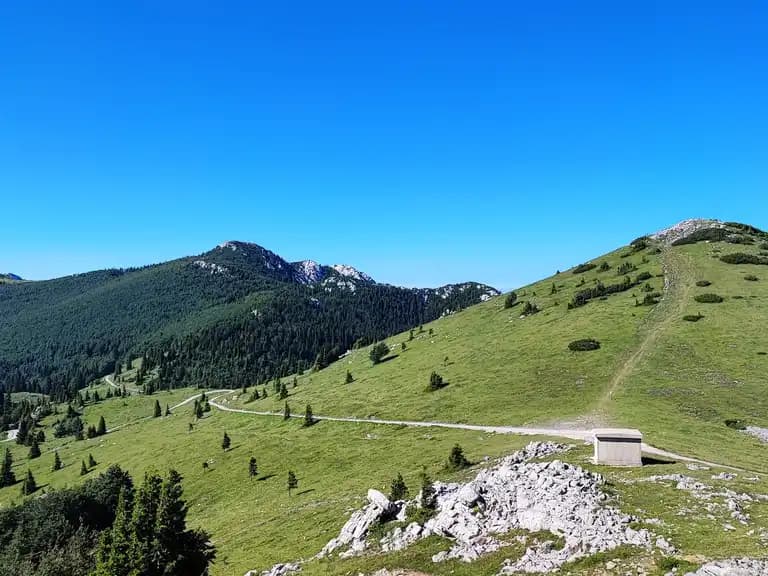
Further south, Paklenica National Park presents a dramatically different face of Velebit. Established in 1949, this park is defined by two impressive canyons—Velika (Big) and Mala (Small) Paklenica—carved through the mountain by ancient watercourses. The sheer limestone cliffs of Velika Paklenica, rising over 400 meters, have made this area a world-renowned rock climbing destination, with more than 500 routes of varying difficulty. For hikers, the park offers everything from gentle walks along the canyon floor to demanding ascents of peaks like Vaganski Vrh (1,757 m), the highest point in the Velebit range. The Paklenica area is also notable for its accessibility, with the park entrance located just a few kilometers from the coastal highway, making it possible to transition from swimming in the Adriatic to hiking in the mountains within minutes.
Accommodation options on Velebit range from rustic mountain huts to comfortable lodges, allowing hikers to experience multi-day adventures without carrying camping equipment. The Zavižan Mountain Hut, situated at 1,594 meters, offers basic accommodation and hearty meals in a historic building dating from 1927. The Paklenica Mountain Hut provides similar services in the southern part of the range, serving as a base for explorations of the national park. For those seeking more comfort, the mountain towns of Krasno in the north and Baške Oštarije in the central part of Velebit offer guesthouses and small hotels where hikers can rest and replenish before continuing their journey.
The best time to hike Velebit depends on personal preferences and the specific area of interest. Spring (May-June) brings an explosion of wildflowers and comfortable temperatures, though some higher trails may still have snow. Summer (July-August) offers reliable weather and the longest daylight hours, but can be hot at lower elevations and crowded in popular areas like Paklenica. Autumn (September-October) features stable weather, fewer crowds, and beautiful fall colors in the deciduous forests. Winter transforms Velebit into a challenging alpine environment, with snow covering the higher parts of the range from November through April; during this season, specialized equipment and experience are necessary for safe hiking.
Safety considerations are particularly important when hiking in Velebit due to the mountain’s size, remoteness, and rapidly changing weather conditions. The Croatian Mountain Rescue Service (HGSS) recommends carrying adequate water (sources are limited on the karst terrain), protective clothing for sudden temperature changes, navigation tools, and a fully charged mobile phone. Hikers should always inform someone of their planned route and expected return time, and should not hesitate to turn back if conditions deteriorate or daylight is waning. With proper preparation, however, the rewards of hiking in this magnificent mountain range—breathtaking vistas, encounters with rare wildlife, and the profound sense of connection with both nature and human history—far outweigh the challenges.
Učka Nature Park: Where Mountains Meet the Sea
Učka Nature Park presents a captivating contrast to the rugged wilderness of Velebit, offering hikers a unique landscape where mountain and Mediterranean environments converge in spectacular harmony. Located on the Istrian peninsula in western Croatia, Učka is a mountain range that rises dramatically from the Adriatic coastline, creating a natural boundary between the Istrian peninsula and the mainland. Established as a nature park in 1999, this 160-square-kilometer protected area encompasses not only the Učka mountain range but also part of the Ćićarija mountain plateau to the north, preserving a landscape of exceptional ecological, cultural, and recreational value.
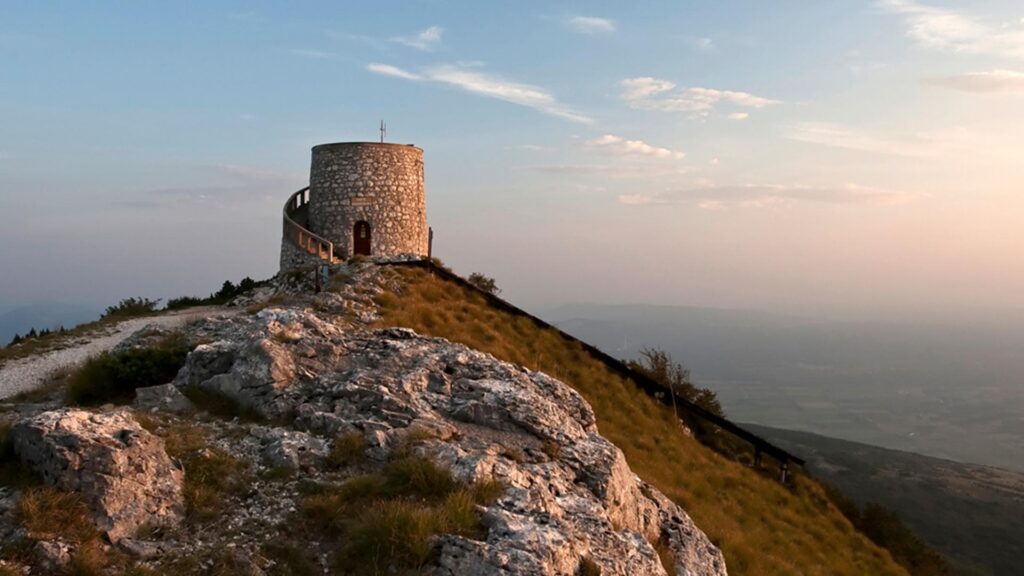
The geographic position of Učka creates a remarkable natural phenomenon—a mountain that seems to rise directly from the sea. From the highest peak, Vojak, standing at 1,401 meters above sea level, hikers are rewarded with one of Croatia’s most breathtaking panoramas. On clear days, particularly when the bora wind has cleared the air, the view extends across the entire Istrian peninsula, the northern Adriatic islands, the Bay of Trieste, and even to the Italian Dolomites and Alps in the distance. This exceptional vantage point has made Vojak a pilgrimage destination for generations of hikers seeking the transcendent experience of seeing such vast expanses of land and sea from a single location.
Geologically, Učka shares the karst characteristics common to Croatia’s Dinaric mountains, with limestone as the predominant rock type. However, its proximity to the sea has created unique conditions that support an extraordinary biodiversity. The mountain functions as a meeting point for three distinct climate zones—Mediterranean, continental, and mountain—resulting in a rich mosaic of habitats and species. The park’s flora includes approximately 1,300 plant species, representing nearly a quarter of Croatia’s total plant diversity within just 160 square kilometers. Among these botanical treasures is the Učka bellflower (Campanula tommasiniana), a delicate purple flower that grows exclusively on the rocky cliffs of Učka and nowhere else in the world, making it one of Europe’s most localized endemic plants.
The fauna of Učka Nature Park is equally diverse, with the mountain providing habitat for numerous bird species, including the golden eagle (Aquila chrysaetos) and the peregrine falcon (Falco peregrinus), both of which nest on inaccessible cliffs. The forests shelter various mammals, from small rodents to larger species like deer, wild boar, and occasionally even bears, wolves, and lynx that wander from the more extensive wilderness areas of Gorski Kotar. Butterflies add splashes of color to the mountain meadows, with over 90 species recorded in the park, making it a paradise for entomologists and nature photographers.
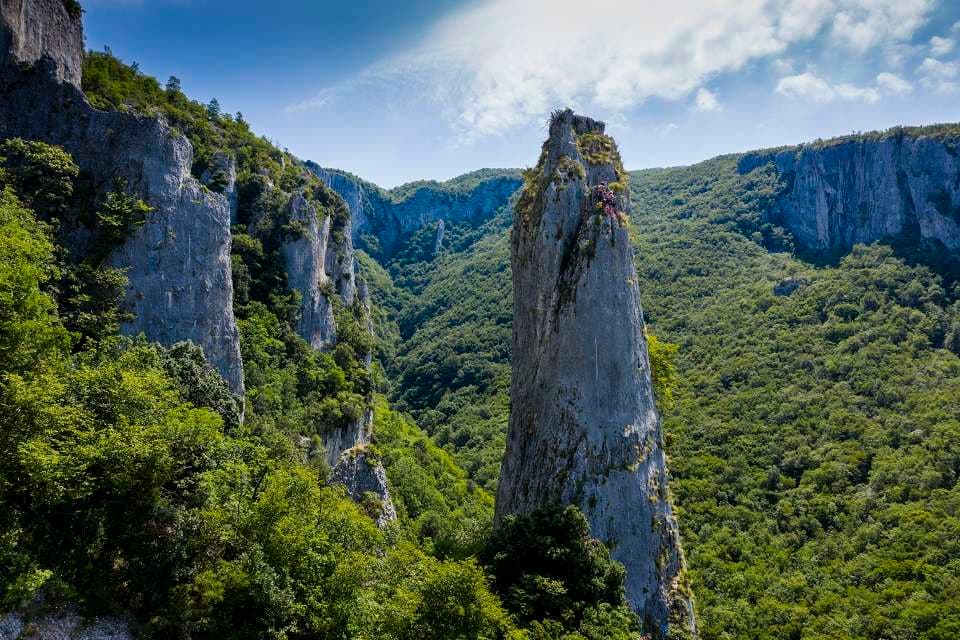
Human history on Učka stretches back millennia, with archaeological evidence suggesting settlement since prehistoric times. Throughout the centuries, local communities developed a sustainable relationship with the mountain, utilizing its resources while maintaining its ecological integrity. Traditional practices such as seasonal livestock grazing helped create and maintain the mountain’s meadows, which today represent important habitats for numerous plant and animal species. The cultural landscape of Učka includes charming villages like Lovranska Draga and Mala Učka, where traditional stone architecture reflects the harmonious coexistence of humans and nature that has characterized this region for generations.
For hikers, Učka Nature Park offers a diverse network of trails catering to various interests and ability levels. The most popular route leads to the summit of Vojak, where a stone tower built in 1911 provides shelter and even more elevated views. This tower, with the year of its construction still visible on the doorstep, has become an iconic symbol of Učka and a favorite destination for photographers. Multiple trails lead to this summit from different starting points, allowing hikers to choose according to their preferences and physical condition.
The Poklon – Vojak – Poklon trail represents one of the most accessible routes to the summit. Beginning at the Poklon mountain pass, located at 922 meters above sea level and easily reached by car from either the coastal or inland side, this moderate trail climbs through beech forests before emerging onto more open terrain with increasingly panoramic views. The name “Poklon” (meaning “bow” or “gift” in Croatian) derives from a religious tradition—travelers would bow at this point when they first caught sight of the Church of Our Lady in Rijeka during pilgrimages to the shrine of Trsat. Today, the Poklon Visitor Center serves as an excellent starting point for explorations of the park, offering information, exhibitions, and educational programs about Učka’s natural and cultural heritage.
For those seeking a more challenging experience, the Lovran – Vojak trail offers a more demanding ascent from the coastal town of Lovran. This route climbs over 1,300 meters in elevation from sea level to the summit, traversing diverse vegetation zones that reflect the transition from Mediterranean to mountain environments. The trail passes through sweet chestnut forests, known locally as “maruni,” whose fruit has been an important food source and trade item for coastal communities for centuries. Higher up, these give way to oak and beech forests before reaching the subalpine zone near the summit. While physically demanding, this trail rewards hikers with constantly changing landscapes and spectacular views of the Kvarner Bay and its islands.
One of Učka’s most culturally significant hiking experiences is the Trebišća-Perun history and mythology trail, which explores the eastern slopes of the mountain above the coastal town of Mošćenička Draga. This interpretive trail delves into the pre-Christian Slavic heritage of the area, particularly focusing on toponyms (place names) associated with Perun, the thunder god who occupied the highest position in the Slavic pantheon. The trail leads through pristine nature and preserved hamlets in the canyon of Potoška vala up to the peak named after this ancient deity. Along the way, information panels explain how this landscape functioned as a sacred space for early Slavic settlers, with natural features representing elements of their cosmology. This 15-kilometer trail offers not only physical exercise but also a fascinating journey into the spiritual dimensions of the landscape.
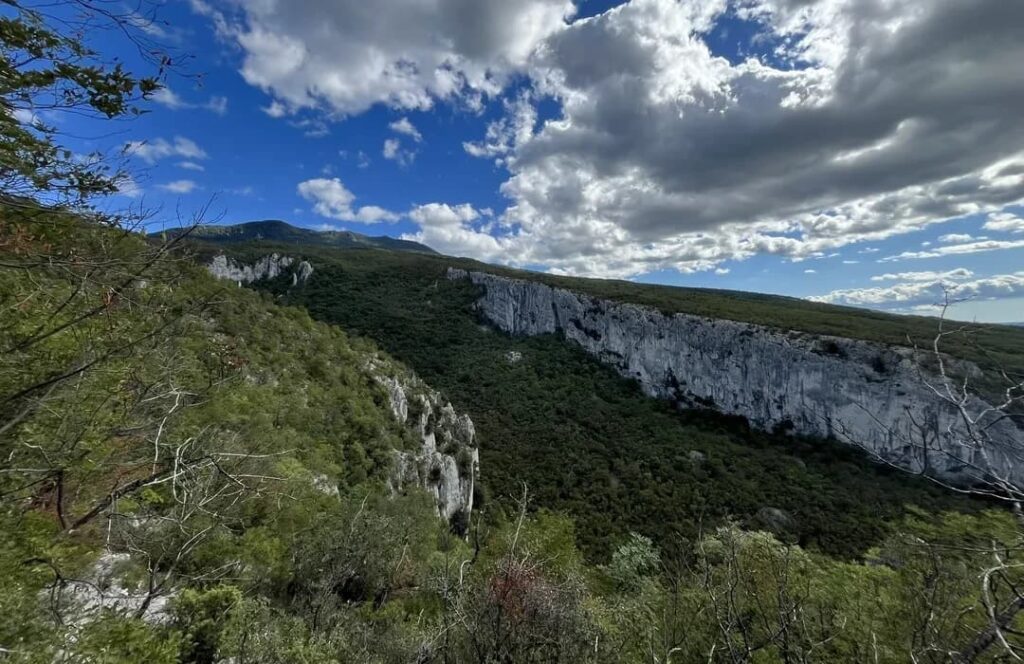
For those interested in the intersection of art and nature, the Land Art Trail Stražica-Sapaćica presents a unique hiking experience. This circular trail combines the natural beauty of Učka’s southern plateau with artistic interventions in the form of land art. The trail is not demanding, making it suitable for families with children, elderly visitors, and others looking for a pleasant walk through beautiful countryside. The leading concept behind this trail is the development of awareness about the connection between humans and nature—a theme that resonates throughout Učka’s history and contemporary management.
Another notable route is the “Two Towers” trail established in 2018, which connects the town tower in Lovran with the Vojak tower on Učka. This trail follows existing hiking paths and features educational boards that inform visitors about the flora and fauna of the mountain. The route offers a perfect combination of cultural heritage, as it begins in the historic coastal town, and natural beauty as it ascends through diverse ecosystems to reach the panoramic summit.
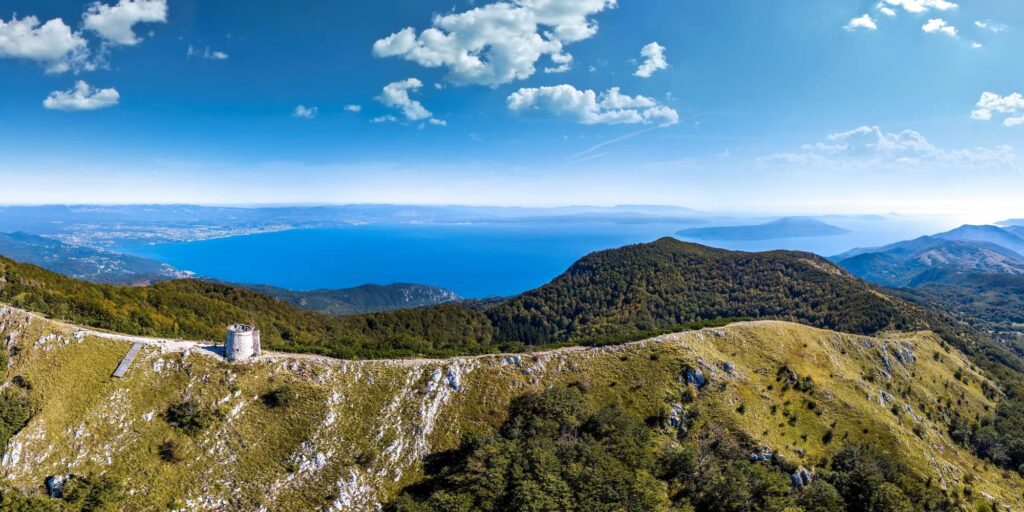
The best time to hike in Učka Nature Park depends on personal preferences and specific interests. Spring (April-June) brings an explosion of wildflowers, with meadows transformed into colorful carpets and the endemic Učka bellflower in bloom on rocky cliffs. Summer offers reliable weather, though temperatures can be high at lower elevations; early morning starts are recommended during this season. Autumn provides pleasant temperatures and spectacular colors as the deciduous forests change, while winter occasionally brings snow to the higher parts of the mountain, creating a magical landscape rarely associated with coastal Croatia.
Practical considerations for hiking in Učka include appropriate footwear and clothing, sufficient water (especially in summer), and navigation tools. While trails are generally well-marked with the standard Croatian mountain markings (red and white circles), carrying a map is advisable, particularly for longer routes. The park administration maintains an informative website with up-to-date information on trail conditions and organized activities, making it a valuable resource for planning a visit. Whether seeking challenging ascents, gentle walks, botanical discoveries, or cultural insights, Učka Nature Park offers hiking experiences that showcase the extraordinary diversity of Croatia’s natural heritage. Explore top activities and experiences in Croatia.
Other Notable Hiking Destinations in Croatia
While Velebit Mountains and Učka Nature Park represent two of Croatia’s premier hiking destinations, the country’s diverse landscape offers numerous other remarkable areas for exploration on foot. From island peaks to inland forests, these additional hiking destinations showcase the extraordinary variety of Croatia’s natural environments and provide options for every level of hiking experience.
Plitvice Lakes National Park, Croatia’s oldest and most visited national park, offers a network of hiking trails that wind through its famous system of sixteen interconnected lakes and numerous waterfalls. Established in 1949 and designated a UNESCO World Heritage site in 1979, this park presents a unique hiking experience where water is the dominant feature rather than mountain peaks. The wooden boardwalks that traverse parts of the park bring hikers into intimate contact with the turquoise waters and lush vegetation, while higher trails provide panoramic views of the lake system. The park’s trail network is well-organized with several circular routes of varying lengths, from short two-hour walks to full-day excursions. While Plitvice can be crowded during peak summer months, visiting in spring or autumn rewards hikers with spectacular seasonal colors and more tranquil conditions.
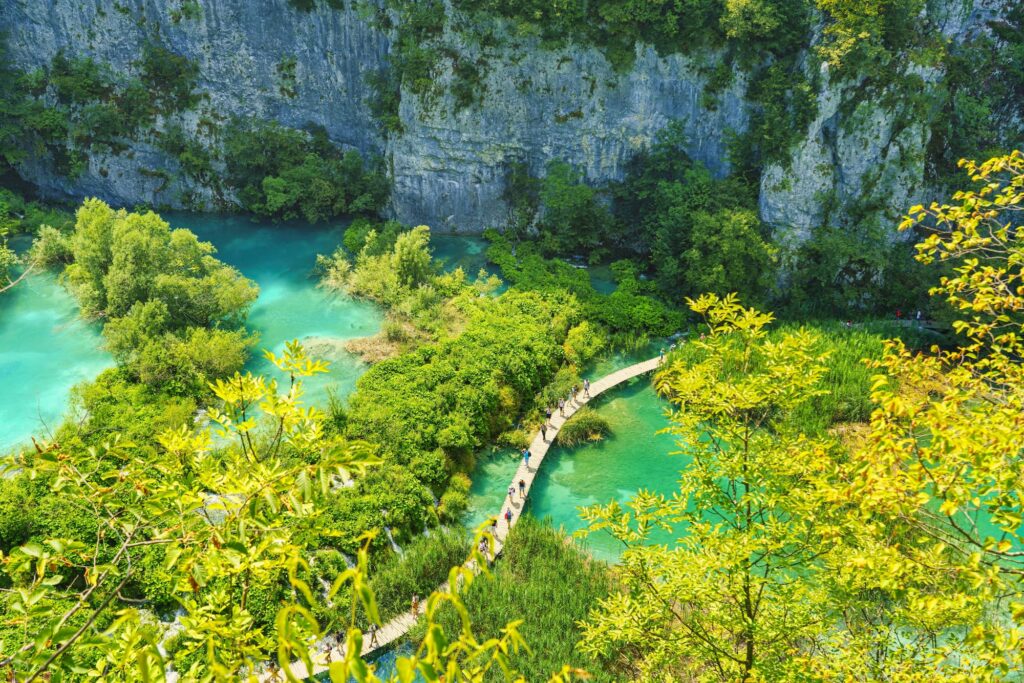
Croatia’s islands offer distinctive hiking experiences that combine mountain terrain with Mediterranean ambiance. Mljet Island, the southernmost of the larger Adriatic islands, features a national park covering its western third. Here, hiking trails circle two saltwater lakes and lead to the highest point, Veliki Grad (514 m), offering spectacular views across the island and surrounding sea. The island’s dense pine forests provide welcome shade during summer hikes, while the opportunity to cool off with a swim after a hike adds a special dimension to the experience. The trails on Mljet range from easy coastal paths to more challenging ascents, making it suitable for hikers of various abilities.
Brač Island, famous for its radiant white stone that was used in building Diocletian’s Palace in Split and reportedly the White House in Washington, D.C., offers excellent hiking centered around its highest peak, Vidova Gora. At 778 meters, this is the highest island peak in the Adriatic, providing panoramic views that extend to neighboring islands and, on clear days, all the way to Italy. The ascent from the town of Bol takes approximately three hours through pine forests and Mediterranean scrubland, with the famous Zlatni Rat beach (Golden Horn) visible below—a perfect spot for post-hike relaxation. Brač also features numerous other trails that connect traditional villages and pass by ancient olive groves and vineyards, offering insights into the island’s agricultural heritage.
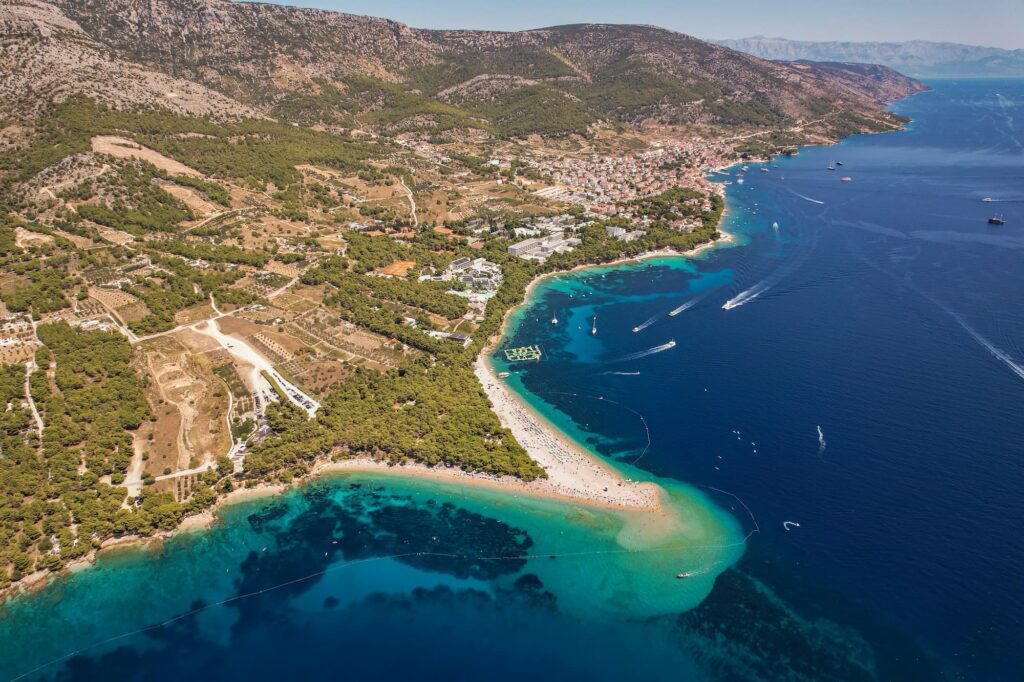
Risnjak National Park, located in the mountainous region of Gorski Kotar near the Slovenian border, presents a completely different hiking environment characterized by dense forests, alpine meadows, and karst formations. The park’s centerpiece is Mount Risnjak (1,528 m), whose summit offers views extending from the Adriatic Sea to the Alps. The area is known for its exceptional biodiversity, including large carnivores such as bears, wolves, and the lynx (ris in Croatian) from which the mountain takes its name. The Leska educational trail provides an accessible introduction to the park’s ecosystems, while more challenging routes lead to the main ridge and summit. Risnjak’s relatively northern location means it receives significant snowfall in winter, creating opportunities for snowshoeing and winter hiking for properly equipped adventurers.

Biokovo Nature Park rises dramatically above the Makarska Riviera on the Dalmatian coast, creating one of Croatia’s most striking landscapes where mountain and sea exist in close proximity. The park’s highest peak, Sveti Jure (Saint George), reaches 1,762 meters and can be accessed by a combination of driving and hiking, though numerous trails of varying difficulty crisscross the mountain. Biokovo is known for its exceptional karst formations, including numerous caves and pits, as well as its rich flora with many endemic species. The recently constructed Skywalk, a glass-floored observation deck extending over a sheer drop, adds a modern attraction to this ancient landscape. Hiking on Biokovo requires careful preparation due to the exposed nature of the terrain and rapidly changing weather conditions, but rewards adventurers with some of Croatia’s most dramatic coastal views.
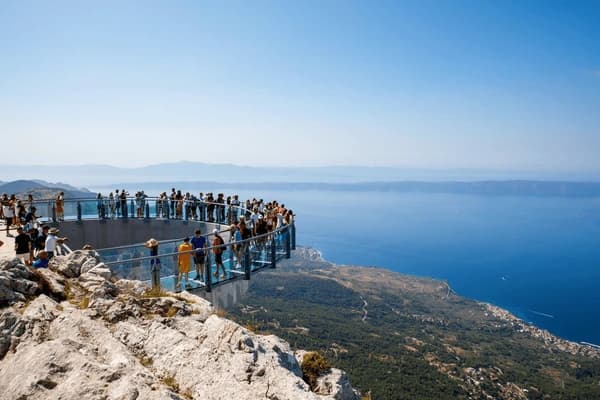
Papuk Nature Park in Slavonia, eastern Croatia, offers a completely different hiking experience in a region dominated by ancient forests and rolling hills rather than karst mountains. Designated as a UNESCO Global Geopark due to its geological significance, Papuk preserves a landscape formed by different processes than the coastal mountains. Hiking trails lead through dense oak and beech forests, past clear streams and small waterfalls, and to modest summits that nonetheless provide lovely views across the Slavonian plains. The area around Jankovac Forest Park, with its artificial lake and waterfall, is particularly popular with hikers. Papuk represents an excellent destination for those seeking gentler terrain and lush forest environments rather than exposed mountain peaks.
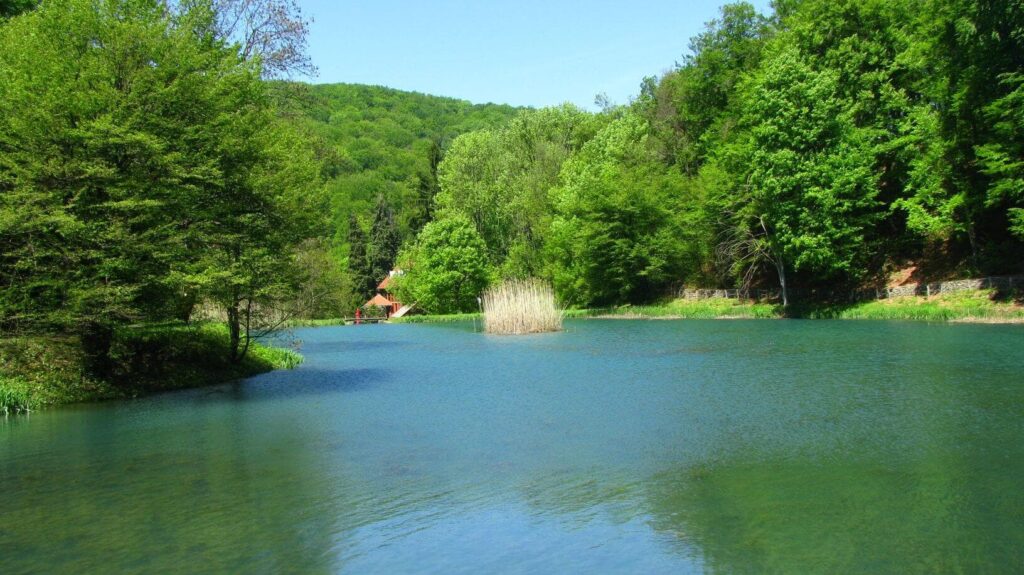
Krka National Park, while primarily known for its spectacular waterfalls and swimming opportunities, also offers several excellent hiking trails that explore less-visited parts of the park. The network of paths allows visitors to escape the crowds concentrated around Skradinski Buk waterfall and discover the park’s diverse ecosystems and cultural heritage, including ancient monasteries and traditional watermills. The circular educational trail at Roški Slap provides an accessible introduction to the park’s natural features, while longer routes follow the Krka River through its impressive canyon.
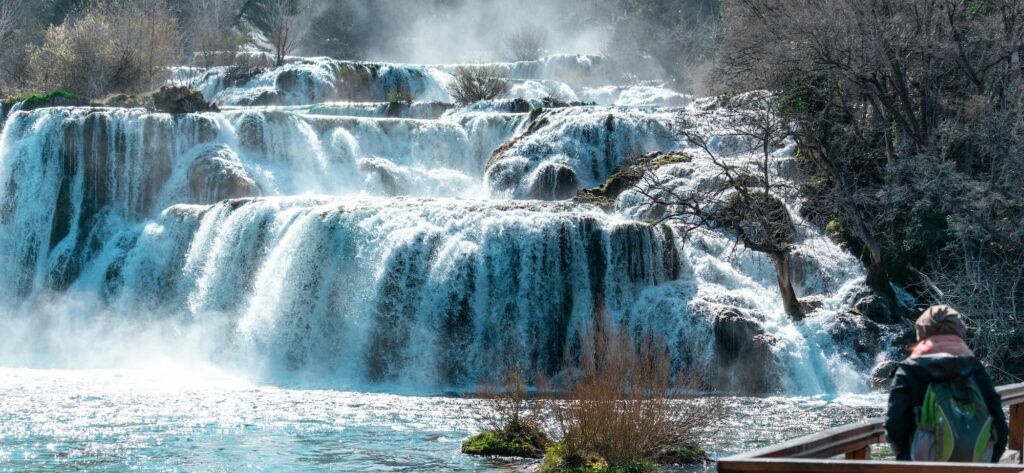
These diverse hiking destinations complement the experiences available in Velebit and Učka, creating a comprehensive hiking offering that showcases Croatia’s remarkable natural diversity. From the lush forests of Plitvice and Risnjak to the Mediterranean environments of the islands, from the dramatic coastal mountains of Biokovo to the gentle hills of Slavonia, Croatia’s hiking trails provide access to landscapes of extraordinary beauty and ecological significance. Each destination has its own character, optimal visiting season, and level of difficulty, allowing hikers to construct itineraries tailored to their interests, abilities, and available time.
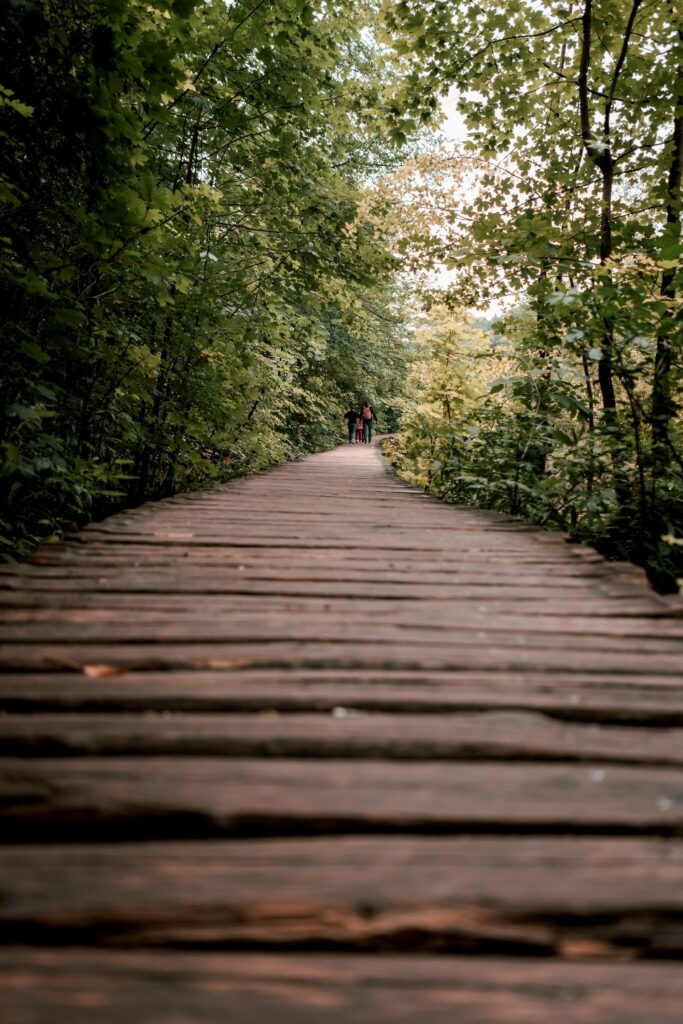
Yacht Charter in Croatia: Combining Sailing and Hiking Adventures
While Croatia’s mountains and hiking trails offer extraordinary experiences on land, the country’s stunning coastline and more than 1,200 islands present equally compelling adventures at sea. For travelers seeking to experience the best of both worlds, combining a hiking expedition with a yacht charter creates the ultimate Croatian adventure. As the “Pearl of the Adriatic,” Croatia has established itself as one of Europe’s premier sailing destinations, with crystal-clear waters, reliable winds, numerous safe anchorages, and a perfect Mediterranean climate making it ideal for exploration by sea.
Croatia’s yacht charter industry has flourished in recent years, offering vessels to suit every preference and budget. According to viravira.co, a leading online yacht charter marketplace, there are over 2,400 yachts and boats of various sizes available for charter in Croatia. Options range from sleek motor yachts that provide luxury and speed to traditional wooden gulets that offer a more authentic sailing experience. Catamarans have become increasingly popular for their stability, spaciousness, and ability to access shallow bays, while monohull sailing yachts appeal to purists who enjoy the traditional sailing experience. For those with sailing qualifications, bareboat charters provide complete freedom, while skippered and fully crewed options cater to those preferring to leave navigation to the experts.
The cost of chartering a yacht in Croatia varies widely depending on the vessel type, size, age, and season. Based on data from viravira.co, prices typically range from €1,500 to €80,000 per week, with an average weekly price of €8,529. More affordable options include smaller sailing yachts and catamarans, particularly during the shoulder seasons of May-June and September-October, when prices are lower and the sailing conditions remain excellent. For those seeking luxury, high-end motor yachts and superyachts offer premium experiences with professional crews, gourmet dining, and lavish accommodations.
The Dalmatian coast represents the heart of Croatia’s sailing territory, with popular charter bases including Split, Trogir, Dubrovnik, and Šibenik. From these starting points, sailors can explore iconic destinations such as Hvar Island, known for its vibrant nightlife and historic town; Brač Island, home to the famous Zlatni Rat beach; and Vis Island, celebrated for its unspoiled nature and authentic atmosphere. The Kornati Archipelago, comprising 89 islands and designated as a national park, offers a more remote sailing experience with dramatic landscapes and exceptional marine biodiversity.

What makes yacht charter in Croatia particularly appealing for hiking enthusiasts is the unique access it provides to trails that would be difficult to reach by land. Many of Croatia’s islands feature excellent hiking paths that lead to panoramic viewpoints, historic sites, and secluded beaches. Sailors can anchor in a protected bay, spend the day exploring trails on islands like Mljet, Lastovo, or Dugi Otok, and return to the comfort of their yacht in the evening. This combination of activities allows travelers to experience Croatia’s diverse landscapes from multiple perspectives while avoiding the logistical challenges of land-based transportation between hiking destinations.
For those interested in exploring this perfect combination of sailing and hiking, viravira.co offers a comprehensive platform for finding and booking the ideal yacht. Their website features detailed information about available vessels, transparent pricing, and the ability to filter options based on specific preferences. Whether you’re planning a dedicated hiking trip with occasional sailing or a primarily nautical adventure with hiking excursions, a yacht charter adds an extraordinary dimension to experiencing Croatia’s natural beauty.
By combining the freedom of a yacht charter with the joy of hiking Croatia’s diverse trails, travelers can craft a truly personalized adventure that showcases the best of this remarkable country from both land and sea. From the deck of your chartered yacht, the mountains you’ve conquered take on a new perspective, while the islands you’ve sailed past reveal hidden trails waiting to be explored on foot.
| Category | Details |
| Main Regions | Velebit Mountains, Učka Nature Park, Biokovo, Risnjak, Plitvice Lakes, Papuk, and coastal islands like Brač and Mljet |
| Best Hiking Season | May–June and September–October for mild temperatures and fewer crowds; July–August for peak summer conditions |
| Top Trails | Premužić Trail (Velebit), Vojak Summit Trail (Učka), Vidova Gora (Brač), Trebišća–Perun Mythology Trail (Učka), Roški Slap Trail (Krka) |
| Difficulty Levels | Easy to advanced; suitable for families, casual walkers, and experienced trekkers |
| Natural Features | Karst formations, cliffs, waterfalls, endemic flora like Učka bellflower and Degenia velebitica, and wildlife including eagles, bears, and lynx |
| Historical Elements | Ancient shepherd paths, dry-stone walls, medieval ruins, prehistoric sites, and mythological trails |
| Accessibility | Well-marked trails with mountain huts, visitor centers, and nearby towns offering accommodation and supplies |
| Safety Tips | Carry water, wear proper footwear, check weather, and inform someone of your route; contact HGSS (112) in emergencies |
| Hiking + Sailing Combo | Yacht charters allow access to remote islands and trailheads; ideal for combining coastal sailing with scenic hikes |
Conclusion
Croatia’s hiking trails offer an extraordinary window into the soul of this diverse and captivating country. From the rugged wilderness of the Velebit Mountains to the sea-kissed slopes of Učka Nature Park, from island peaks to inland forests, the trails we’ve explored reveal landscapes of breathtaking beauty and profound ecological significance. Each footstep along these paths connects hikers not only with Croatia’s natural heritage but also with the cultural traditions that have shaped these landscapes over millennia. The stone walls, shepherd’s huts, and ancient pathways encountered along the way tell stories of generations who have lived in harmony with these environments, creating a hiking experience that engages both body and mind.
The contrast between Croatia’s hiking destinations forms part of their collective appeal. Velebit presents a world of dramatic karst formations, dense forests, and alpine meadows, where the Premužić Trail stands as a monument to human ingenuity in making wilderness accessible. Učka offers a unique convergence of mountain and Mediterranean environments, where hikers can experience the rare sensation of seeing islands, sea, and distant mountains from a single vantage point. The country’s national and nature parks, from Plitvice Lakes to Risnjak, from Mljet to Biokovo, each contribute distinctive elements to Croatia’s hiking mosaic, ensuring that every trail brings new discoveries and perspectives.
What makes hiking in Croatia particularly special is the opportunity to combine mountain adventures with other quintessential Croatian experiences. The proximity of trails to historic coastal towns allows hikers to balance physical exertion with cultural exploration and relaxation. The option to charter a yacht, as we’ve discussed, creates unique possibilities for accessing remote trails while enjoying the pleasures of sailing the crystalline waters of the Adriatic. This versatility makes Croatia an ideal destination for travelers with diverse interests, allowing for customized itineraries that can include challenging hikes one day and leisurely coastal explorations the next.
For those planning a Croatian hiking adventure, timing considerations are important. The peak summer months of July and August offer reliable weather but can bring intense heat at lower elevations and crowds in popular areas. The “shoulder seasons” of late spring (May-June) and early autumn (September-October) generally provide ideal hiking conditions, with comfortable temperatures, fewer visitors, and natural landscapes at their most vibrant—whether adorned with spring wildflowers or autumn colors. Winter presents a different face of Croatia’s mountains, with snow transforming the higher elevations into challenging alpine environments that require appropriate equipment and experience.
Practical preparations enhance the hiking experience in Croatia. Proper footwear, sufficient water, sun protection, and navigation tools are essential for safety and comfort. Familiarizing yourself with the Croatian Mountain Rescue Service’s recommendations and emergency contacts provides peace of mind, particularly when venturing into more remote areas. Respecting trail markings, local regulations, and the natural environment ensures that these precious landscapes remain pristine for future generations of hikers.
As Croatia continues to gain recognition as a premier hiking destination, new trails are being developed and existing infrastructure improved. Local communities increasingly recognize the value of sustainable hiking tourism, creating opportunities for authentic cultural exchanges and economic benefits that support conservation efforts. Organizations like the Croatian Mountaineering Association continue their long tradition of maintaining trails and promoting responsible hiking practices, while digital resources make planning and navigation more accessible than ever before.
Whether you’re standing on Vojak peak watching the sun set over the Adriatic islands, traversing the wild beauty of the Premužić Trail, discovering the waterfalls of Plitvice Lakes (learn more about cultural tours in Croatia), or combining hiking with sailing along the Dalmatian coast, Croatia’s trails offer journeys of discovery that remain etched in memory long after the journey ends. The country’s unique combination of natural diversity, cultural heritage, and outdoor recreation opportunities creates hiking experiences that satisfy not just the desire for physical challenge but also the deeper human yearning for connection with the natural world and the stories it contains.
So lace up your hiking boots, fill your water bottle, and set out to discover the trails of Croatia—from the majestic Velebit Mountains to the panoramic heights of Učka Nature Park and beyond. The path awaits, promising adventures that will engage your senses, challenge your body, expand your mind, and quite possibly, transform your understanding of this remarkable corner of Europe.
FAQs
The top hiking regions in Croatia include the Velebit Mountains, Učka Nature Park, Plitvice Lakes National Park, Biokovo Nature Park, and the forested trails of Risnjak. Each region offers diverse landscapes and trail difficulty levels.
The best time to hike in Croatia is during late spring (May–June) and early autumn (September–October), when temperatures are mild, wildflowers or fall colors enhance the scenery, and popular trails are less crowded.
The Premužić Trail is a 57-kilometer hiking path in the Velebit range, designed with sustainable dry-stone engineering. It offers panoramic views and is suitable for hikers of moderate ability.
Yes, many hikers in Croatia charter yachts to access remote island trails. Destinations like Mljet, Brač, and Dugi Otok offer scenic hikes that pair perfectly with coastal sailing adventures.
Yes, Croatia has trails for all levels. Well-marked routes, modern infrastructure, and support from the Croatian Mountain Rescue Service (HGSS) make it accessible for beginners, especially in nature parks like Učka and Plitvice.

